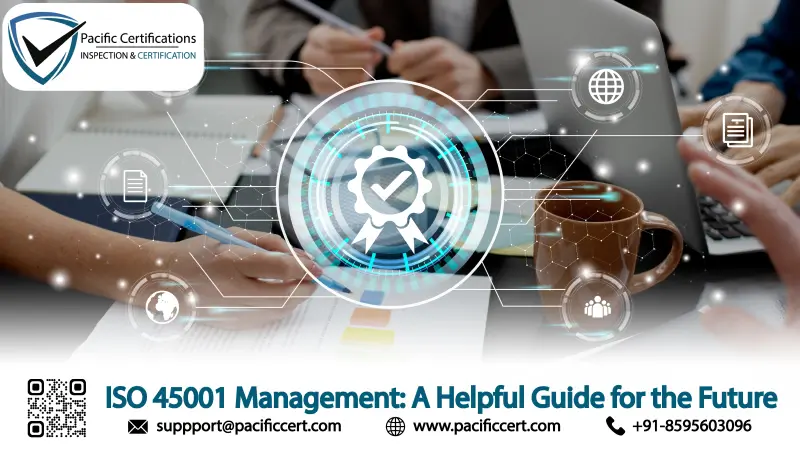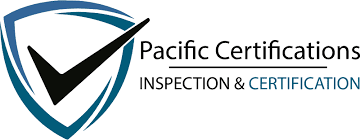ISO 45001 Management: A Helpful Guide for the Future

Introduction
The global workplace is changing rapidly as organizations face new expectations on safety, well-being and transparency. As industries evolve, ISO 45001 has become a critical foundation for building safer workplaces where operational risks are controlled, employee well-being is prioritized and incidents are minimized. Safety is no longer just a compliance requirement; it is a strategic differentiator that affects productivity, trust and long-term resilience.
Organizations adopting ISO 45001 create systems that make safety a continuing practice rather than a set of isolated procedures. The standard helps institutions identify hazards, evaluate risks, train their workforce and establish clear lines of responsibility. As businesses expand across borders and technologies advance, a strong safety management system becomes essential for sustaining performance and meeting regulatory expectations. Many organizations are now using ISO 45001 to reinforce their culture, reduce disruptions and build confidence among stakeholders.
Discuss your ISO 45001 audit and certification pathway with Pacific Certifications, an accredited certification body recognized globally.
Quick summary
ISO 45001 defines the requirements for an occupational health and safety management system that promotes safe working conditions, risk control and organizational accountability. It provides a structured framework that helps institutions prevent injuries, maintain compliance and strengthen employee well-being. A well-implemented ISO 45001 system aligns leadership, processes and operational controls while establishing a clear model for identifying hazards, responding to incidents and improving safety performance over time.
Why ISO 45001 management matters?
Workplace safety is becoming a defining component of organizational excellence. Rising expectations from regulators, employees and international partners mean that institutions must show strong and measurable safety performance. ISO 45001 helps them build a system where hazards are controlled, behavior is guided by clear expectations and improvements are monitored through reliable performance indicators.
This standard strengthens safety governance, establishes process-based controls and supports organizations in creating a workplace where risks are identified early and incidents are prevented. It also improves resource planning, operational continuity and workforce confidence, key elements for long-term resilience.
“A strong ISO 45001 system builds a culture where safety becomes everyone’s responsibility, from leadership to frontline teams.”
Table: ISO 45001 Management - Key Elements
Clause Area | Focus | What It Supports |
Context of the organization | Understanding risks and opportunities | Stronger planning and hazard identification |
Leadership and worker participation | Accountability and involvement | Shared responsibility and clear communication |
Planning | Risk assessment and controls | Reduced incidents and proactive management |
Support | Competence and awareness | Skilled workforce capability |
Operation | Process control and emergency preparedness | Safe daily activities |
Performance evaluation | Monitoring and analysis | Data-based decisions |
Improvement | Corrective action and system development | Long-term safety performance |
What are the requirements for ISO 45001 management?
To meet ISO 45001 expectations, organizations must adopt a structured approach that prioritizes hazard control, worker involvement and ongoing performance evaluation. The requirements encourage leadership accountability and a disciplined safety culture.

Below are the key requirements:
- Define the scope of the safety management system.
- Identify internal and external factors affecting safety performance.
- Establish an occupational health and safety policy.
- Conduct hazard identification and risk assessments.
- Establish measurable safety objectives aligned with organizational priorities.
- Ensure training and competence for staff at all levels.
- Maintain documentation and records for safety activities.
- Implement operational controls including emergency preparedness.
- Conduct internal audits for safety processes.
- Hold management reviews to assess system performance.
- Address nonconformities and implement corrective actions.
- Maintain continual improvement practices as part of safety culture.
Tip:Maintain a centralized record of incident data, training logs and hazard findings to support faster audit readiness and trend monitoring.
How to prepare for ISO 45001 management certification?
Organizations preparing for certification must evaluate their existing safety practices and align them with a structured framework. Effective preparation ensures that the system is implemented consistently and can withstand internal and external assessments.
- Conduct a gap assessment against ISO 45001 requirements.
- Create or refine your safety policy and objectives.
- Train staff on hazard identification and reporting.
- Document processes, controls and operational practices.
- Implement monitoring tools for safety performance.
- Conduct internal audits and address findings.
- Hold a management review meeting to confirm system readiness.
Certification audit
Stage 1 audit: Reviews documentation, safety policies and established controls.
Stage 2 audit: Evaluates implementation across facilities, work areas and operations.
Nonconformities: Must be corrected with supporting evidence.
Management review: Confirms leadership involvement in safety performance.
Final certification: Issued after corrective actions are accepted.
Surveillance audits: Conducted annually to ensure sustained performance.
Recertification audits: Required every three years to maintain validity.
What are the benefits of ISO 45001 management?
A strong ISO 45001 system reduces risks and improves workforce well-being through systematic and reliable controls. The benefits extend beyond compliance and support long-term strength across processes, people and performance.
Below are the key benefits:
- Improved workplace safety through structured hazard identification
- Reduced incident rates and operational interruptions
- Greater confidence among employees and partners
- Better clarity in roles, responsibilities and communication
- Streamlined emergency response and incident handling
- Stronger monitoring through KPIs and review cycles
- Consistent decision-making supported by transparent system data
- KPIs: incident frequency rate, hazard closure time, safety training completion
- SLAs: corrective action turnaround, emergency drill schedule, audit closure cycle
Market Trends
Organizations are increasingly integrating safety systems with sustainability and quality frameworks, forming unified structures to manage performance. There is growing focus on digital tools such as real-time incident reporting platforms, automated safety dashboards and worker engagement applications. Remote safety audits, digital risk assessments and integrated compliance tools are becoming standard practice as institutions seek to improve visibility and reduce disruptions.
In the coming years, ISO 45001 adoption will be driven by automation, predictive analytics and data-driven safety management. Advanced monitoring tools will help organizations identify hazards early and respond quickly. Safety systems will be integrated with ESG reporting, supply chain assessments and compliance regulations as institutions work to demonstrate reliable and measurable safety performance. AI-enabled risk assessment systems and smart sensors will further strengthen operational safety and consistency.
Training and courses
Pacific Certifications provides accredited training programs for ISO 45001:
· Lead Auditor Training: For individuals responsible for auditing occupational health and safety systems.
· Lead Implementer Training: For personnel establishing, improving, or managing ISO 45001 systems.
To schedule your training session, contact [email protected].
How Pacific Certifications can help?
Pacific Certifications provides accredited ISO 45001 certification and audit services. We conduct impartial assessments to verify compliance with ISO 45001 requirements without offering consultancy. Our certification process includes system review, performance evaluation and verification of hazard control measures.
We issue Certificates of Conformity following an accredited audit process to help institutions validate their safety systems.
For your ISO 45001 certification plan or audit roadmap, contact [email protected] or visit www.pacificcert.com.
Ready to get ISO 45001 certified?
Contact Pacific Certifications to begin your certification journey today!
Author: Alina Ansari
Suggested Certifications –
Read more: Pacific Blogs
